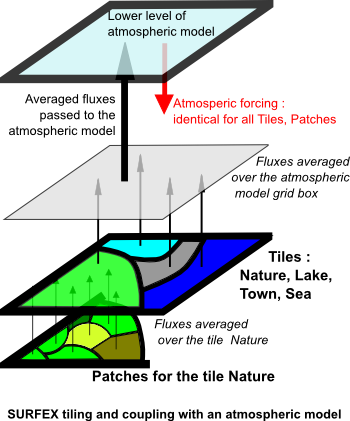Assimilation of near-surface and remotely sensed variables are performed using two assimilation techniques : The OI scheme allows to correct soil moisture contents and soil temperatures from the knowledge of short-range forecasts errors in temperature and relative humidity at 2 meters. (...)

